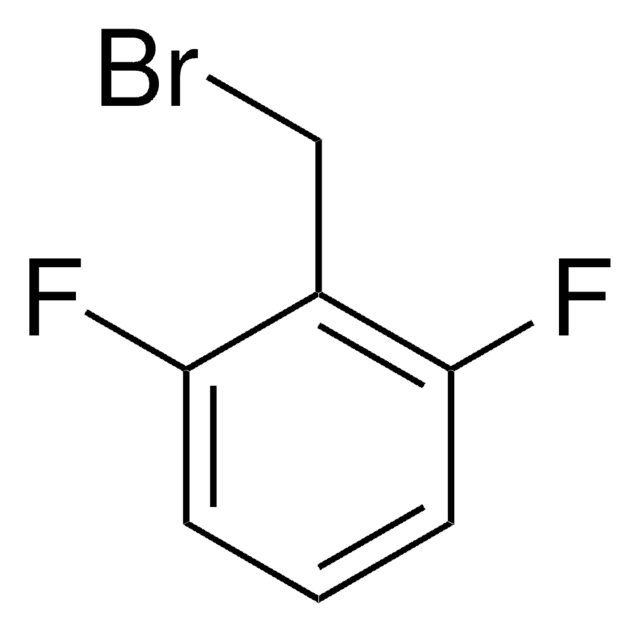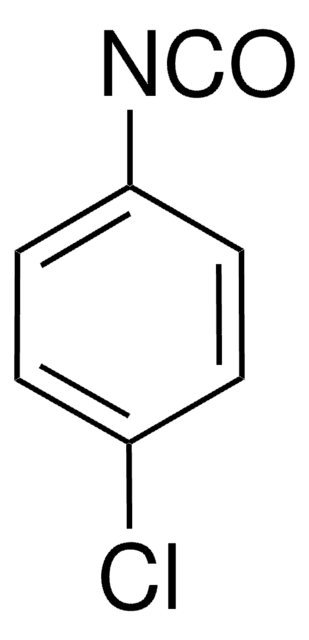All Photos(2)
About This Item
Linear Formula:
F2C6H3C(O)NH2
CAS Number:
Molecular Weight:
157.12
Beilstein:
2047480
EC Number:
MDL number:
UNSPSC Code:
12352100
PubChem Substance ID:
NACRES:
NA.22
Recommended Products
Quality Level
Assay
97%
form
solid
mp
145-148 °C (lit.)
solubility
ethanol: soluble 5%, clear to turbid, colorless to light yellow
SMILES string
NC(=O)c1c(F)cccc1F
InChI
1S/C7H5F2NO/c8-4-2-1-3-5(9)6(4)7(10)11/h1-3H,(H2,10,11)
InChI key
AVRQBXVUUXHRMY-UHFFFAOYSA-N
Looking for similar products? Visit Product Comparison Guide
General description
2,6-Difluorobenzamide is a major metabolite of pesticide diflubenzuron and has been quantitated by HPLC/diode-array method.
Signal Word
Warning
Hazard Statements
Precautionary Statements
Hazard Classifications
Acute Tox. 4 Oral
Storage Class Code
11 - Combustible Solids
WGK
WGK 1
Flash Point(F)
Not applicable
Flash Point(C)
Not applicable
Personal Protective Equipment
dust mask type N95 (US), Eyeshields, Gloves
Choose from one of the most recent versions:
Already Own This Product?
Find documentation for the products that you have recently purchased in the Document Library.
HPLC/diode-array method for the determination of the pesticide diflubenzuron and its major metabolites 2,6-difluorobenzamide, 4-chlorophenylurea, and 4-chloroaniline in forestry matrixes.
Rodriguez E, et al.
Journal of Liquid Chromatography and Related Technologies, 21(12), 1857-1870 (1998)
J Koerts et al.
Xenobiotica; the fate of foreign compounds in biological systems, 27(8), 801-817 (1997-08-01)
1. The metabolic fate of the insecticide teflubenzuron, orally dosed to the male Wistar rat, was investigated. Particular attention was paid to the metabolic fate of the benzoyl and aniline moiety after hydrolysis of the urea bridge. 2. The 0-48-h
C Eriksson et al.
Food and chemical toxicology : an international journal published for the British Industrial Biological Research Association, 30(10), 871-877 (1992-10-01)
The herbicides dichlobenil (2,6-dichlorobenzonitrile), chlorthiamid (2,6-dichlorothiobenzamide) and their environmental degradation product 2,6-dichlorobenzamide are irreversibly bound and toxic to the olfactory mucosa following single injections in mice (Brandt et al., Toxicology and Applied Pharmacology 1990, 103, 491-501; Brittebo et al., Fundamental
Varahenage R Perera et al.
Biochimica et biophysica acta, 1840(9), 2851-2861 (2014-05-14)
Gram-positive bacteria in the phylum Firmicutes synthesize the low molecular weight thiol bacillithiol rather than glutathione or mycothiol. The bacillithiol transferase YfiT from Bacillus subtilis was identified as a new member of the recently discovered DinB/YfiT-like Superfamily. Based on structural
Our team of scientists has experience in all areas of research including Life Science, Material Science, Chemical Synthesis, Chromatography, Analytical and many others.
Contact Technical Service









